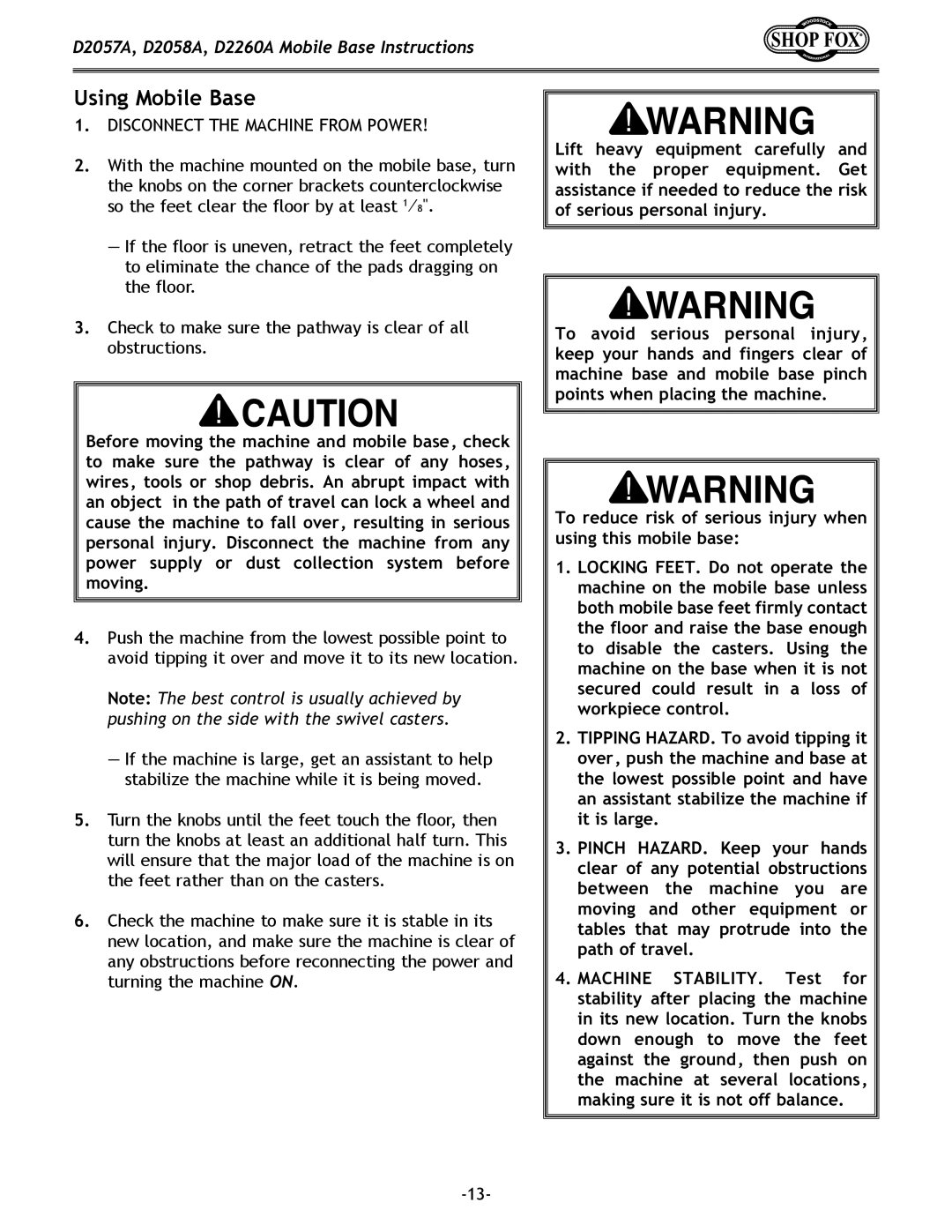
D2057A, D2058A, D2260A Mobile Base Instructions
Using Mobile Base
1.DISCONNECT THE MACHINE FROM POWER!
2.With the machine mounted on the mobile base, turn the knobs on the corner brackets counterclockwise so the feet clear the floor by at least 1⁄8".
—If the floor is uneven, retract the feet completely to eliminate the chance of the pads dragging on the floor.
3.Check to make sure the pathway is clear of all obstructions.
Before moving the machine and mobile base, check to make sure the pathway is clear of any hoses, wires, tools or shop debris. An abrupt impact with an object in the path of travel can lock a wheel and cause the machine to fall over, resulting in serious personal injury. Disconnect the machine from any power supply or dust collection system before moving.
4.Push the machine from the lowest possible point to avoid tipping it over and move it to its new location.
Note: The best control is usually achieved by pushing on the side with the swivel casters.
—If the machine is large, get an assistant to help stabilize the machine while it is being moved.
5.Turn the knobs until the feet touch the floor, then turn the knobs at least an additional half turn. This will ensure that the major load of the machine is on the feet rather than on the casters.
6.Check the machine to make sure it is stable in its new location, and make sure the machine is clear of any obstructions before reconnecting the power and turning the machine ON.
Lift heavy equipment carefully and with the proper equipment. Get assistance if needed to reduce the risk of serious personal injury.
To avoid serious personal injury, keep your hands and fingers clear of machine base and mobile base pinch points when placing the machine.
To reduce risk of serious injury when using this mobile base:
1.LOCKING FEET. Do not operate the machine on the mobile base unless both mobile base feet firmly contact the floor and raise the base enough to disable the casters. Using the machine on the base when it is not secured could result in a loss of workpiece control.
2.TIPPING HAZARD. To avoid tipping it over, push the machine and base at the lowest possible point and have an assistant stabilize the machine if it is large.
3.PINCH HAZARD. Keep your hands clear of any potential obstructions between the machine you are moving and other equipment or tables that may protrude into the path of travel.
4.MACHINE STABILITY. Test for stability after placing the machine in its new location. Turn the knobs down enough to move the feet against the ground, then push on the machine at several locations, making sure it is not off balance.
